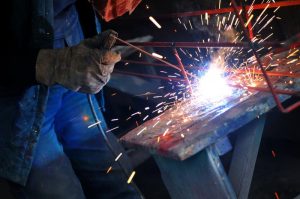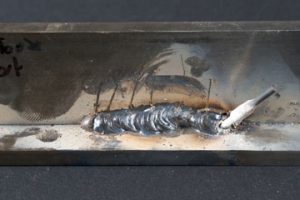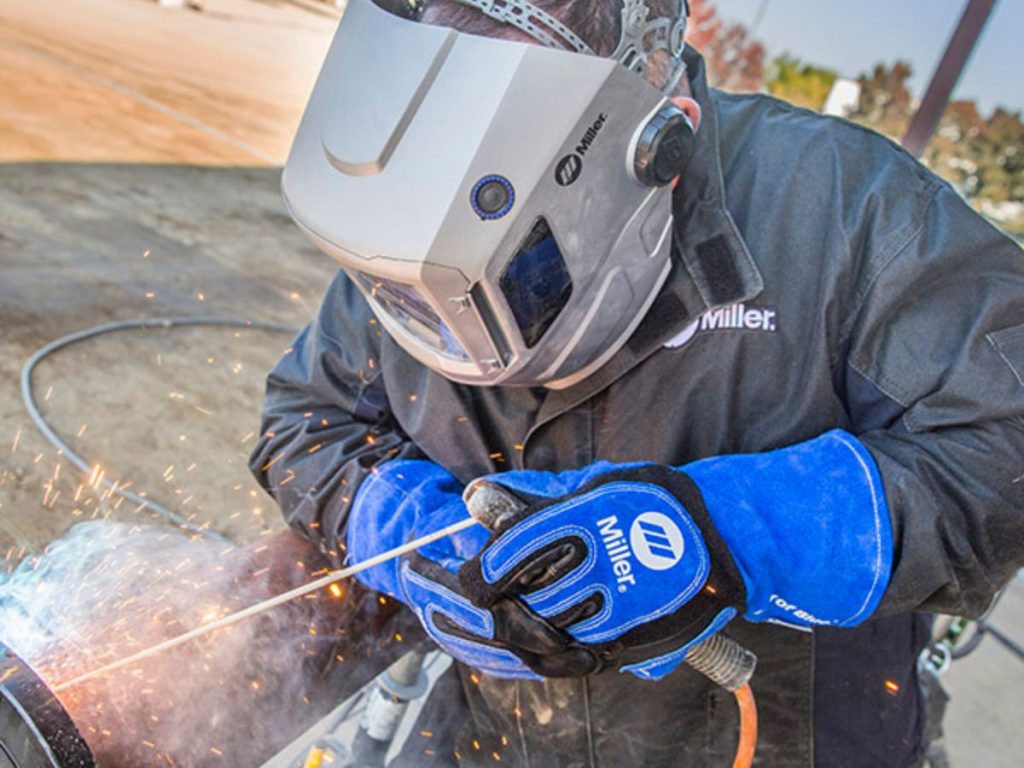If you are looking to improve your stick welding techniques, there are several things you should do. First, you should keep the electrodes at the right temperature. Next, you should change your technique. Stick welding is often plagued by cracking, which is caused by the high content of carbon, alloy, and sulfur in the metal. Cracking occurs when the electrodes are not held in the right position during the welding process and are a sign of poor technique.
Basic elements to improve results
There are several basic elements to consider when welding. These elements will influence your weld quality. Avoid having your electrode stick out too far; this will result in cold welds, which will decrease the amperage and penetration of the joint. As long as you keep the stick out to a minimum, you will enjoy the best results.
When welding, it is important to monitor the speed and length of the arc. Using a slow speed will produce a convex bead with a shallow penetration. Using a high speed will cause your stick to travel too slowly. This can cause cracks that can develop into fractures. To minimize the risk of cracks, use low currents and small diameter electrodes. Lastly, always use a stable electrical connection.
When stick welding, a steady arc is critical for a perfect weld. To achieve this, keep the arc length equal to the diameter of the electrode. This will help you visualize the weld puddle more accurately. An even arc will also result in a narrow and stable bead, with minimal spatter. Stick welders often use a technique called drag to help them visualize the weld puddle. It involves holding the electrode at a slight angle to the base material.

Prepare
Whether you’re a stick welding novice or a seasoned pro, there are a few ways to improve your technique. One of the most important things to remember is to always set the correct electrode voltage and current for the work you’re doing. A positive electrode is recommended for deeper penetration while a negative electrode is best for welding thin metals.
Stick welding is a skill that’s best mastered with practice and proper body position. Luckily, there are plenty of tools to help you achieve great results. Among these tools is an electrode drag guide, which can help you get a good angle for your work. A guideline for a good stick welding technique is 10 to 15 degrees away from the direction you’re moving, although this isn’t applicable for vertical applications.
The next step is to determine what kind of stick welding equipment you’ll need. Stick welding equipment can be expensive, but it all depends on your budget and what you’re planning to use it for. If you’re only doing basic welding, you don’t need to spend much money. But to make sure you get the best stick welding equipment, you should consider some aspects, such as brand, spare parts, and warranty. If you’re planning to do more welding, you should invest in a reputable brand, like Miller, Lincoln Electric, or Hobart. On the other hand, you can buy cheaper versions of these brands if you’re only doing small jobs and don’t mind getting stuck occasionally.
CLAMS
Improving your stick welding technique is a great way to improve the quality of your welds. You’ll have a cleaner weld if you have a clean metal surface. When welds are messy, they’re more likely to have inclusions or cracks. So make sure you clean your metal thoroughly before you weld. You can also use a wire brush to remove slag from the base metal weld joint. This will ensure that the weld is clean and aesthetically pleasing.
The first step in improving your stick welding technique is to learn the correct technique for holding the electrode. The stick electrode should be held at a distance of about 15 to 30% from the workpiece. Make sure you are holding the holder with both hands. Once you’re ready to weld, place your pieces in front of the arc. Drag the electrode tip across the surface of the metal. If the arc begins to cut out, you’ve lifted the electrode too high.
Improving your Stick welding technique also requires proper setup. Always make sure you’re in a stable position and that you can see the weld puddle clearly. You also need to make sure your head is angled away from the weld to avoid the arc from falling on your face. Proper setup will improve your results and prevent common beginner mistakes.

Current setting
When using a stick welding technique, the current setting of the electrode is critical. You should select the correct amperage based on the thickness and metal composition of the metal you’re welding. Using a positive electrode will add 10% penetration when using AC current. Conversely, using a negative electrode will produce less penetration and a more uniform weld.
To achieve the best results, stick welding must adhere to the following five rules: current setting, length of the arc, angle of travel, manipulation of the electrodes, and welding speed. It’s also important to clean the surface of the joint, use a clean work clamp, and maintain a stable electrical connection.
To achieve the best results, you should apply a current setting that produces a ten to fifteen degree drag or pull. Each welder has a preferred method and style, and you can experiment with different styles to find yours. For example, some people will use a steady line while others will try varying the drag and pull of the electrodes. In either case, the arc should produce a small, stable, strong, and stable bead with minimal porosity.
Length of arc
One of the key elements to consider when improving stick welding technique is the length of the arc. The length of the arc can be affected by the current settings, the angle of the electrode, and the speed of travel. Another important factor is the cleanliness of the metal piece being welded. Using a dirty metal piece will compromise the quality of the weld.
The arc length should not exceed the diameter of the metal portion that you’re welding. When improving stick welding technique, you must also keep the arc at a steady distance from the workpiece. Ideally, this distance should be between three and fifteen millimeters away.
Setting the amperage of the arc is also critical. Low amperage can cause the electrode to become sticky. This will prevent it from melting the base piece. Moreover, a low-amperage arc may stutter or even go out.

Angle of travel
If you are new to stick welding, there are some simple tricks you can try to improve your technique. The first tip is to clean your metal before welding. This will reduce gas bubbles and allow you to move faster through the joint. You should also consider the length of your arc and the angle of travel.
Another trick you can try is to pull the electrode back slowly. Pushing it too far back can trap slag and cause porosity. You must also have a steady hand when welding. Also, you must maintain a consistent distance from the workpiece, at least 3mm.
The third tip is to adjust the speed of your arc. Your arc speed affects the amount of metal deposited on the workpiece, as well as how much heat gets dumped into it. In addition, you should try to keep the arc at the leading edge of the weld puddle.
Manipulation of electrode
One of the most important aspects of stick welding is to learn how to manipulate the electrode properly. There are several different methods of manipulating the electrode, and each one requires a unique style and technique. As you practice and become more experienced, you will eventually develop your own method and style.
The first technique is to hold the electrode at the correct length and angle. This is achieved by holding the electrode at an angle relative to the workpiece. The electrode should be held at an angle of 5 to 15 degrees in relation to the workpiece. This helps you maintain an even arc length. The next technique is to tilt the electrode to the correct height.
Ideally, the arc length should not exceed the diameter of the metal portion. When welding, you should make sure that the arc does not exceed the metal portion’s core diameter. By manipulating the electrode properly, you can see the arc and the puddle more clearly. It is also important to have the right body position to effectively manipulate the electrode.
Speed of travel
When stick welding, you can control the speed of travel of the electrode by choosing the polarity and the angle of travel on the electrode chart. The angle of travel will determine when you need to stop welding. The electrode E6010 is the best option if you want to weld with a smooth surface and minimum spatter. Using a larger diameter electrode can help you weld faster, but you may need to adjust the speed of travel according to the joint dimensions.
The speed of travel determines how much rod is deposited, and also the uniformity of the weld bead. A weld produced at the proper speed should be about one-inch wide, and it should be evenly distributed. The wrong speed may result in a thin bead with little penetration. Too slow of a speed will produce a bead with overlapping edges and could blow a hole in thin metal.
Stick welding should be performed at a speed of between ten to fifteen degrees to achieve a good weld. This speed is dependent on the type of filler material, welding process and welding position. However, certain gases lend themselves to higher speeds. For instance, a high percentage of helium in the welding gas mixture may enable higher speeds.

